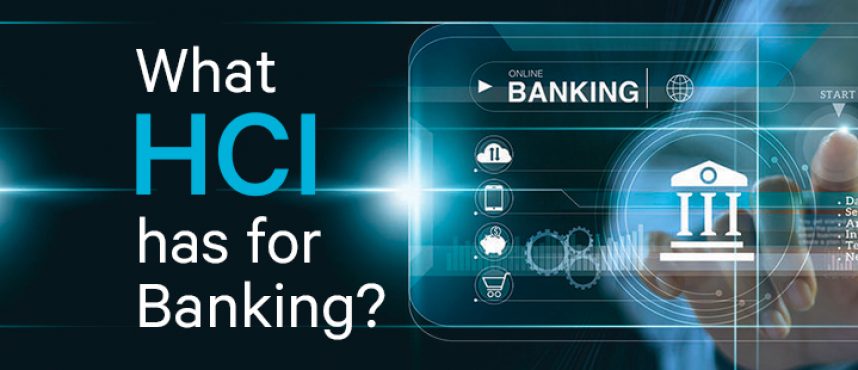What HCI has for Banking?
Computer technology has come a long way since the introduction of the first personal computer that was introduced by Altair way back in 1974. Now, the world is run by software applications and servers.
On that note, the global financial sector, (banks to be precise) can now take their services to the next level, all thanks to the advantages offered by HCI or Hyper Converged Infrastructure.
What is it?
Well, according to the Enterprise Solution Group at Network Techlab, one of the many renowned Nutanix partners in Mumbai, HCI or Hyper Converged Infrastructure is an IT infrastructure that is defined by software applications where all aspects in a typical IT infrastructure that are generally run on tangible systems are transferred to virtual systems all thanks to commercial off-the-shelf powerful servers.
The outcome for IT Personnel
Since most of the work will be carried out virtually, IT personnel will have less to worry about. Most of the time, in case of an IT infrastructure associated with a bank, IT personnel needs to work long hours to ensure that the system remains in operation. The reason is simple – link failures and failed transactions can irate the clients. It can even push them away from the bank in question to the arms of its competing financial institutions. This kind of loss will become unbearable for a bank as it is operating to make money. In the end, the IT personnel associated with taking care of the IT infrastructure of a bank that recently lost some of its clients to its competition will be subjected to the full wrath of his or her boss.
All of the above can be avoided if IT professionals can urge their bosses to implement HCI in their business model.
Benefits of HCI in terms of managing infrastructure
Banks and related financial institutions have a lot on their plates, all the time which is why they need to be backed by a system that can run incessantly. Now to have an IT infrastructure that cannot take time off, a bank needs to have a robust IT team always on standby. Furthermore, it would also need to invest a lot in systems and related physical terminals as well as servers. All of this costs money and time.
The aforementioned can be minimized with the help from companies like Network Techlab which happens to be one of the leading hyper converged infrastructure service providers in India.
HCI is known for its –
- Simplicity
- Ease of deployment
- Easy to operate interface and
- High cost-efficiency factor.
Furthermore, when a bank implements HCI in its branches then it will have fewer systems to manage and will also have the means to serve its clients better.
Highest Uptime with Cluster Management
HCI is implemented using a cluster of appliances so that the infrastructure is available from multiple access points thus limiting the chances of complete failure in high traffic scenarios like a typical business day of a bank.
Combine the updates of Hardware and Software and Be ready for Tech Upgrading
HCI also simplifies regular system software and firmware updates.
Since the infrastructure has multiple access points and is being run through multiple systems simultaneously, in case the firmware or the software of the infrastructure needs an immediate update, the infrastructure manager can carry out the same in a single attempt.
This eradicates –
- Component compatibility concerns
- Issues with system operations and
HCI Simplicity for Banking
As mentioned earlier, HCI is meant for the banking sector as people don’t like it when their online transactions are taking longer than usual or are downright declined. Furthermore, by adopting HCI, rural bank branches can ensure that daily operations are carried out without any issue even when IT support and staffs are limited.
HCI infrastructure can be managed by junior administrators thus allowing a bank to reduce its operational costs as well.
Managing DR in HCI
HCI is known for its minimal preliminary Cabling and Networking configuration. But that doesn’t mean that HCI infrastructures are weak. A typical HCI infrastructure is similar to traditional 3-2-1 virtualisation architecture but doesn’t have a single point of failure. This means that when it comes to Disaster Recovery, HCI scores more than a traditional IT infrastructure due to the high level of security it offers to business-critical data.
Learning curve in HCI
HCI is not only beneficial for urban bank branches and related financial institutions operating in the cities, it also acts as a desired asset for remote branches that often struggle with connectivity issues and lack of IT support. HCI ensures that both banks and their clients can get access to banking services instantly minus failures or delays.
For more details, interested parties can get in touch with renowned HCI solutions providers like Network Techlab – which happens to be one of the premier companies in India that offers HCI solutions to one and all and that too at reasonable rates. The company has expertise into Business Operations since 1996. For more details, feel free to get in touch with them.
For more information please get in touch with us today:
M: +91-8879004536 | E: info@netlabindia.com










